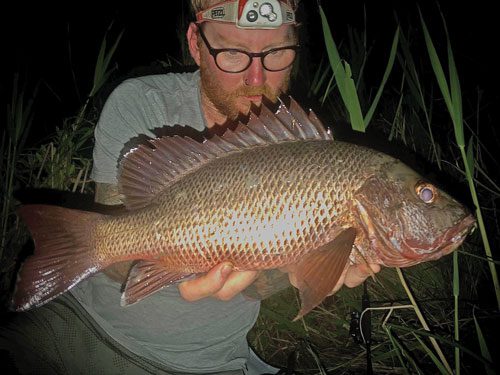Here we are again, with the end of yet another year and Christmas holidays around the corner. In reflection, it certainly has been a different year to previous.
At the time of writing, it is cold and raining, instead of being 30C and 80 percent humidity. This has certainly seen a change in defined angling seasons, most likely due to water and air temperatures.
The sheer volume of fresh water entering the estuaries, creeks, rivers and dams is also playing a part. December is regarded by many as the start of our pelagic run.
This is when the water temperature, currents and wind push a wide range of summer species into our region.
For the local traveling angler, K’gari tends to see these fish species first because they travel south on their summer migration.
To start with, I’m talking about mackerel, tuna, mahi mahi and wahoo.
Of course, there are many other species, but these four are the fun fish that give you big line-screaming runs, aerial displays and put a smile on your face for days.
Depending on the swell and wind direction, you can start in close around Halls Reef and head north towards Double Island, taking in Teewah as you go.
If fishing in close is quiet, try heading out wider to North Reef and the 50m line, then work your way south to the bar crossing.
Be mindful to keep an eye on any bird activity and bust ups on the surface, as this indicates the presence of baitfish often driven upward by feeding fish.
Mackerel in the form of spanish, broad-bar and spotted provide great medium-weight angling opportunities and they all taste great.

For the time being, until February 1, we need not worry about the new regulations, so enjoy taking a few for a feed.
For the novice lure angler, mackerel and tuna are two easy offshore targets.
On the troll is the easiest way to find fish, as well as discover new ground.
It can be a tiresome exercise if not catching fish, so have a good spread of lures and even a troll bait such as garfish.
Look at the new Nomad DTX 110mm and 145mm diving lures, which come with BKK terminals and don’t need upgrading.
All too often anglers will grab the biggest lures and wonder why they aren’t working. Try going small at the start of the season, especially if the bait you are seeing is smaller.
For those trolling, you need a rod with enough backbone to set hooks into a hard-hitting fish. I find that jigging rods are the perfect crossover rods for this because they usually have the stopping power and aren’t too long.
If on a budget, for hard-hitting reef species, the Shimano Raider Reef is one such rod, it allows for dropping jigs and live bait.
A suitable spin reel capable of holding 300m of your chosen braid or mono should be used.
For those running braid, you should consider running a longer than usual – 6m plus – mono leader for shock absorption.
Platypus have been making lines and leaders for many years and the current Hard Armour Supple leader would be a great starting point.
 Bush 'n Beach Fishing Magazine Location reports & tips for fishing, boating, camping, kayaking, 4WDing in Queensland and Northern NSW
Bush 'n Beach Fishing Magazine Location reports & tips for fishing, boating, camping, kayaking, 4WDing in Queensland and Northern NSW








